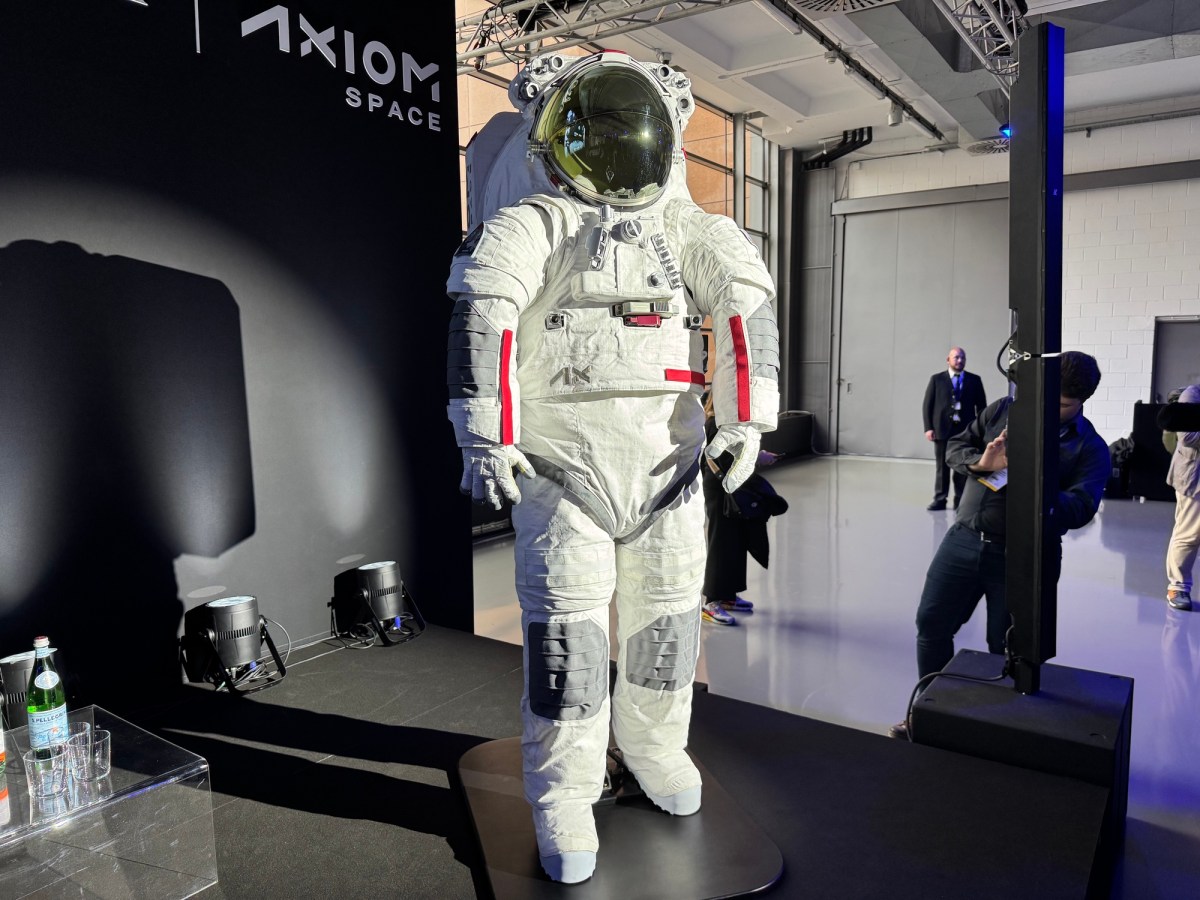MILAN — Axiom Space showed off the flight design of the Artemis spacesuit it is developing for NASA with the assistance of Prada.
At a briefing at the International Astronautical Congress here Oct. 16, Axiom and Prada revealed details about the Axiom Extravehicular Mobility Unit (AxEMU) suit that Axiom is creating for use by NASA on lunar landing missions starting with Artemis 3.
“Today marks a significant step on the path towards returning humans to the surface of the moon,” said Russell Ralston, executive vice president of extravehicular activity at Axiom, at the briefing.
The company has previously shown off versions of the suit, including at a March 2023 event in Houston. Those previous events, though, used a suit with a dark cover layer that Axiom said was not designed for use on an actual spaceflight instead was intended to protect proprietary elements of the suit’s design. This version has a white outer layer that would be used on Artemis missions.
Axiom emphasized the advanced capabilities in the suit, particularly when compared to the suits worn by the Apollo astronauts on moonwalks more than a half-century ago. “Certainly there’s a lot more mobility in this suit design,” he said. There are also greater redundancy in the suit as well as healthy monitoring systems not available in the Apollo-era suits.
The design has also changed from earlier versions Axiom displayed. “Over the last two years we have really iterated the design quite quickly,” he said. “What’s underneath this layer is not the same as what was there a couple years ago.”
Axiom Space highlighted the key design elements of its Artemis spacesuit. Credit: Axiom SpaceThe unveiling came just over a year after Axiom announced it was working with luxury goods company Prada, an unconventional partnership intended to leverage Prada’s expertise in materials and design.
“With the partnership with Prada, we’ve been able to make a lot of really great progress very quickly,” Ralston said in an interview.
He said Axiom has leveraged Prada’s expertise in fabrics and garment design in helping create the outer layer of the suit, which reflects sunlight and keeps dust from getting into interior layers. “When our teams have come together to design the suit, we’ve learned from each other in how to pattern the outer layer of the suit, or in stitching, or in how to tailor these kind of customized fabrics.”
That capability is important because, he said, there is limited expertise available in spacesuit development.
“If you look across all the different technologies that are needed within the suit, the uniqueness of those technologies and their application, the supply chain has tended to be pretty unstable,” he said. “So, one of the things that Prada has really helped us with is bringing stability to that base, especially on the fabric side.”
“For Axiom, having a supplier that was able to address their needs very quickly and without a problem was super important,” said Lorenzo Bertelli, chief marketing officer of Prada Group, in an interview. “This is something luxury and fashion design, of course, has because the scale is completely different.”
Not surprisingly, Prada also contributed to the appearance of the suit. “One of the things that was important to us was the appeal of the suit, the look of the suit,” Ralston said. “Something that Prada brought to the table was helping with the general aesthetic of the suit.”
One design aspect that brought the two companies together was a prominent red stripe on the suit. Ralston noted that was a nod to a NASA tradition where the mission commander’s suit would have that red stripe to distinguish them from another spacewalker. That red stripe is also a signature of Prada design.
Bertelli added that Prada supported a team in the America’s Cup yachting contest called Luna Rossa, or Red Moon. “It’s a super nice coincidence that after more than 20 years those two things came together.”
While Axiom called this version of the suit its “flight design,” the company is still going through a critical design review process for the suit that will formally freeze the design for production. “We’ve gotten to a place where we have a design that we think is the right answer, so to speak,” Ralston said. “But what you have to do is go qualify it, and that’s going to be a process of really intense testing.”
That development, he added, remains on schedule to have spacesuits ready for the Artemis 3 lunar landing mission, which NASA has scheduled for as soon as the fall of 2026.
While the current focus of the suit is for walking on the moon, Ralston said the suit can be easily adapted for applications in low Earth orbit, such as spacewalks from the International Space Station or Axiom’s future commercial space station. NASA had previously contracted with Collins Aerospace to develop a new ISS spacesuit, but Collins said in June it was halting its work on that effort.
“We have a single architecture of a suit, basically a single design,” he said. “All we have to do to go from an Artemis mission to, say, a low Earth orbit mission, is change the boots.”
Both Bertelli and Ralston said the two companies have worked well together. “To move that quickly, one of the things that was required is partnering with others who are more advanced, maybe, than the space industry in certain areas, and working together to not have to reinvent the wheel,” Ralston said.
Bertelli added that he did not have problems finding people within Prada willing to work on the spacesuit, with about 30 employees working on it part or full time. “I had a queue of people who wanted to work on this project. For them it was something extraordinary.”
